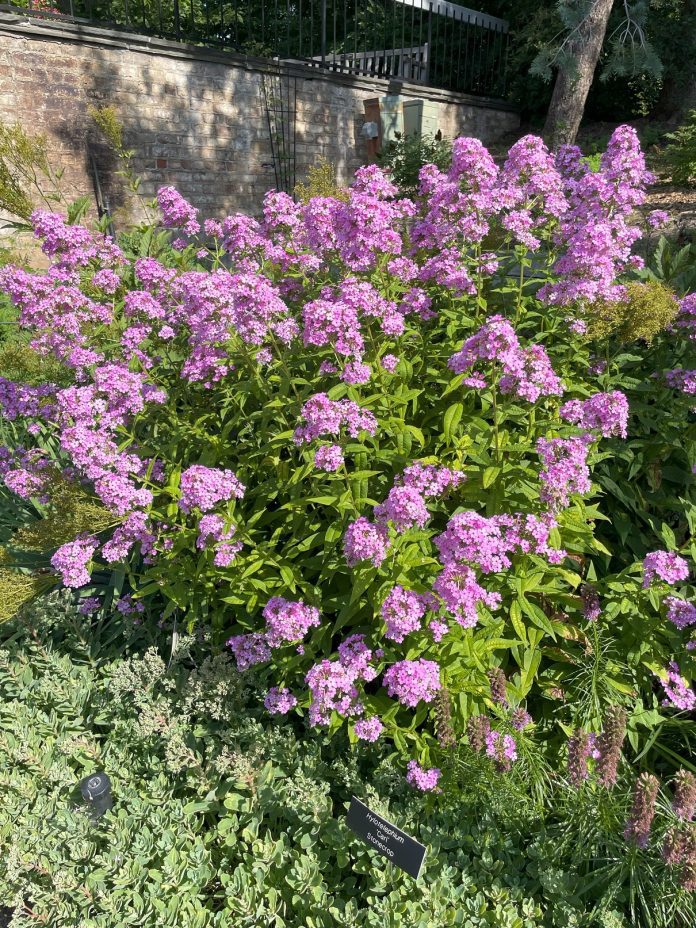
Add long-lasting beauty and pollinator appeal to your garden with this year’s Perennial Plant of the Year, Jeana garden phlox (Phlox paniculata ‘Jeana’). Selected for its tall sturdy habit and fragrant dense flower heads it is a welcome addition to perennial, meadow, and pollinator gardens as well as mixed borders.
Grow this perennial phlox in full sun with a bit of afternoon shade in hotter climates. It is hardy in USDA zones three to eight, growing and flowering best in moist, fertile, and well-drained soil.
The Perennial Plant of the Year (PPOY) is selected by members of the Perennial Plant Association for its suitability to a wide range of climatic conditions, low maintenance, relative pest and disease resistance, availability, and multiple seasons of beauty. This program began in 1990 and you can find out more about past winners on the Perennial Plant Association website.
This cultivar of the North American native Phlox paniculata was discovered growing along the Harpeth River near Nashville, Tennessee. It was named for the woman, Jeana Prewitt, who discovered this plant. It was a standout with its mildew-resistant foliage. Jeana is the head gardener at Bedside Manor in Brentwood, Tennessee. She took cuttings of the plant and began propagating it. In time, it was declared to be a new cultivar and has been available for several years.
Mt. Cuba Center, a botanical garden in Delaware, found it to be the best-performing phlox in their trials and it attracted more butterflies than the other garden phlox in the two-year study. Fifteen volunteers from the Pollinator Watch Team conducted weekly observations of 94 different phlox over two years. Jeana had 539 butterfly visits – way more than any other phlox in the study – and is especially attractive to eastern tiger swallowtails.
Enjoy the lavender-pink flowers with wine-colored eyes that cover the plant from mid-summer to fall. Although each flower is smaller than other garden phlox, the dense cone-shaped flower head is made up of hundreds of individual petals providing a beautiful show. Removing faded flowers, also known as deadheading, promotes continued bloom and prevents the self-seeding of inferior seedlings.
Combine this three-to-five-inch-tall plant with other perennials like Amsonia, Shasta daisies (Leucanthemum x superbum), Iron Butterfly ironweed (Vernonia lettermanii ‘Iron Butterfly’), coneflowers (Echinacea), and switch grass (Panicum virgatum). Or use it as a backdrop for shorter plants like alliums and woodland sage (Salvia nemorosa).
Look for places to add this late-season bloomer to your gardens and landscapes. You’ll enjoy the flowers and butterflies that stop by for a visit.















